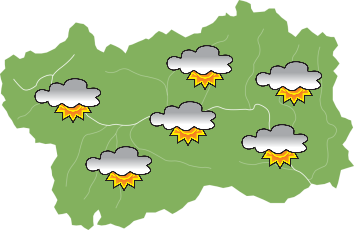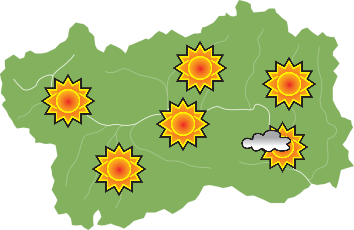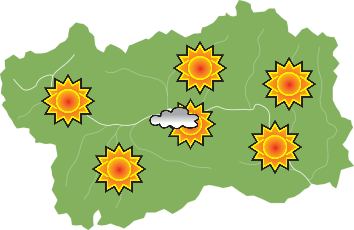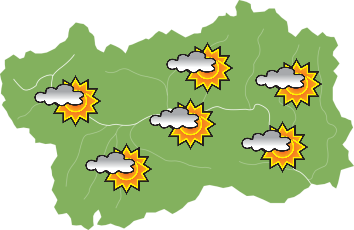Sarriod de La Tour Castle
Resort: Saint-Pierre
Accompanied visit
Last tour 1 hour before closing time.
- October to March:
Tue-Sun from 10 a.m. to 1 p.m. and 2 p.m. to 5 p.m.
- April to September:
Tue-Sun from 9 a.m. to 7 p.m.
open on Mondays in July and August
Closed on Mondays except in July, August and public holidays.
Monday 28 April 2025 the castle is open.
Closed on December 25th and January 1st.
Opening times are subject to variations: we advice to verify them by contacting the phone number reported in the “Contact” area.
Full price ticket: € 6.00
Reduced entrance-fee: € 4.00 (groups of at least 25 paying visitors, specific deals)
Reduced 19 - 25 years: € 3,00
Free:
- children and teenagers under 25 years
- visitors with disabilities and their companions
- teachers and other persons accompanying school groups.
Passes for the visit of several sites are on sell directly at the castle’s ticket office.
- on line reservation and purchase of the tickets are strongly advised on MiDA
- backpacks and bulky bags are not allowed
Access: entry allowed for groups up to 25 people per visit.
Tickets: advance sale from opening time onwards, following the arrival order, until last visit.
Accessibility: partially accessible. For the physically disabled in wheelchairs, the castle is accessible from the municipal car park, if accompanied, and the visit is limited to the ground floor and part of the first floor. The presence of a companion is recommended. Availability of an elevator inside the castle. Presence of toilets for the disabled.
Photos and videos: it is possible to take pictures and videos, for private use and not for gain, with any device without flash and support. Shooting with selfie stick is forbidden. Using shots and films for advertising, press or commercial purposes is allowed only upon authorization.
Pets: small animals are admitted inside the monument only if held in one’s arms or transported in a pet carrier.
Contact
Evidence of the existence of the Sarriod noble family, linked politically, but not by blood, to the lords of Bard, goes back to the end of the 12th century. We are still not certain of the origins of the castle located in Saint-Pierre, in a flatland area a short distance from the state road.
The oldest building included the chapel and the central, square tower (donjon) surrounded by the castle walls, typical of Val d’Aosta castles of the 10-12th century.
In 1420, Jean Sarriod built a castle in the location of the tower already known as the “turris Sariodorum” since the 14th century, as a place of reception, by adding a series of wings to the existing donjon. This included the building of the spiral staircase in the tower (viret) and the addition of cross windows in cut stone, which are characteristic of fifteenth century Valdostan architecture. In 1478 Jean’s son, Antoine Sarriod de la Tour, transformed the chapel dedicated to the Virgin Mary and Saint John the Evangelist, which is when the external frescoes of the Crucifix and Saint Christopher were painted and the small bell tower was built. On the ground floor of the north wing, there is a large wooden-ceilinged hall. On the first floor you find the so-called “hall of heads” which gets its name from the decorations on the wooden ceiling.
In the late 15th century, the boundary wall was given circular and semi-circular defence towers and the new entrance was opened on the eastern side with pointed arch portal and sculpted arch vault bearing the Sarriod coat of arms.
The change in level from room to room is evidence of a variety of works over the centuries. The west-facing wing was added in the 16th century, while the north tower dates back to the 17th century. A number of wall-painting fragments and a stucco fireplace date back to the 18th century.
The castle remained the property of the Sarriod de la Tour until 1923, then went to the Bensa family of Genoa. It has been property of the autonomous Region Aosta Valley since 1970.










